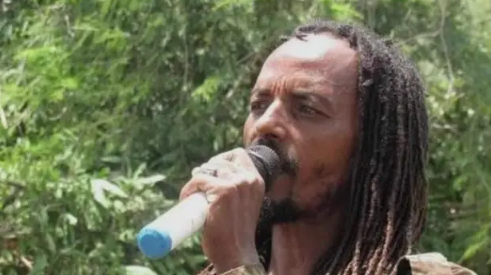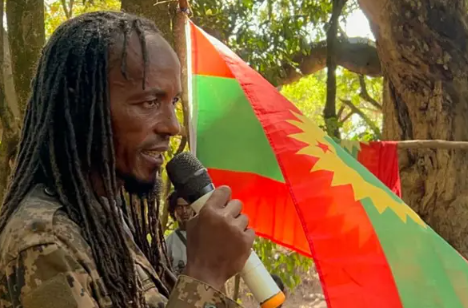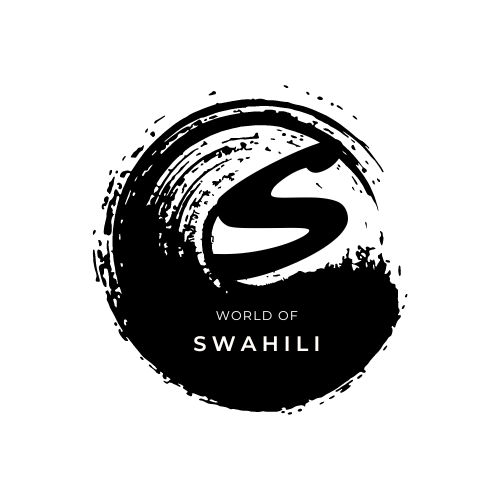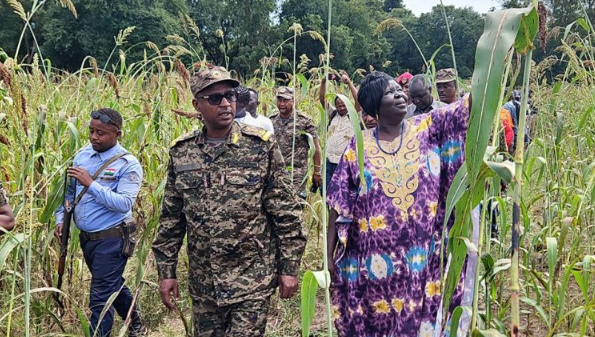Introduction Suuraa WBO – Seensa
Table of Contents
The topic of Suuraa WBO focuses on the significance of images related to the Oromo Liberation Army (WBO), a pivotal entity in the ongoing struggle for the rights and representation of the Oromo people in Ethiopia. These images serve not only as historical records of the movement’s activities but also as powerful symbols of resistance, identity, and cultural heritage for the Oromo community. They often capture moments of struggle, unity, and resilience, reflecting the aspirations and challenges faced by the Oromo people in their quest for autonomy and justice.
Recently, there has been a growing interest in locating and sharing these suuraa wbo for various purposes, including educational initiatives, cultural preservation, and advocacy efforts. Educators and scholars seek to use these visuals to illustrate the historical context of the Oromo liberation movement, while cultural advocates aim to highlight the rich heritage and narratives of the Oromo people. Furthermore, activists leverage these images to raise awareness and garner support for the ongoing struggles of the Oromo, emphasizing the importance of visual storytelling in mobilizing communities and fostering solidarity. As such, the exploration of Suuraa WBO represents an important intersection of history, culture, and contemporary advocacy within the broader context of Ethiopian socio-political dynamics.
Online Platforms for Finding Suuraa WBO
1. Suuraa wbo in Social Media Platforms
Social media has emerged as a vital resource for discovering and sharing Suuraa WBO (images related to the Oromo Liberation Army). These platforms facilitate the rapid dissemination of information, enabling users to engage with visual content that encapsulates the struggles and narratives of the Oromo people. Here are some of the most popular platforms where users can find these images:
- Facebook:
Facebook is a widely used platform for community building and sharing content. Many groups and pages dedicated to the Oromo struggle and suuraa wbo can be found here. Users can search for specific pages or groups that focus on Oromo history, culture, and activism. By following these groups, users can access a plethora of images, videos, and updates related to WBO activities. Popular hashtags like #SuuraaWBO and #OromoLiberation can help users discover relevant posts and discussions. - Twitter:
Twitter serves as a powerful tool for real-time updates and engagement. Users can follow accounts associated with Oromo activism, news outlets, and individual activists who frequently share images related to the suuraa wbo. Searching for hashtags such as #SuuraaWBO or #OromoLiberation allows users to find tweets that include images and commentary on current events, as well as historical context surrounding the Oromo liberation movement. - Instagram:
Instagram’s visual-centric platform is ideal for discovering images that represent the suuraa wbo and the broader Oromo cultural heritage. Users can follow accounts dedicated to Oromo art, activism, and history, which often post powerful imagery capturing moments of protest, celebration, and remembrance. Utilizing hashtags like #SuuraaWBO, #OromoCulture, and #OromoLiberation helps users uncover a rich collection of visual content that highlights the experiences and expressions of the Oromo people.
2. Suuraa wbo Suggested Pages and Hashtags
To enhance the search for Suuraa WBO, users should consider the following specific pages and hashtags:
- Pages to Follow:
- Oromo Liberation Front (OLF): Often shares images and updates related to suuraa wbo activities and Oromo culture.
- Oromo Community Organizations: Various local and diaspora-based Oromo community organizations maintain active social media pages that share images, events, and cultural narratives.
- Activists and Influencers: Following prominent Oromo activists and cultural figures on these platforms can lead to valuable content and discussions related to the suuraa wbo and Oromo rights.
- Hashtags to Explore:
- #SuuraaWBO: This hashtag aggregates images and posts specifically related to the Oromo Liberation Army, making it easier to find relevant visual content.
- #OromoLiberation: A broader hashtag that encompasses discussions and images related to the Oromo liberation movement, providing context and community engagement.
- #OromoCulture: This hashtag highlights various aspects of Oromo culture, including traditional practices, celebrations, and visual representations of the community’s rich heritage.
By leveraging these social media platforms and suggested pages and hashtags, users can effectively discover and engage with Suuraa WBO, contributing to the broader understanding and advocacy for the rights and narratives of the Oromo people.
Suuraa wbo in News Outlets and Journalistic Sources

In addition to social media, reputable news websites and journalistic sources are essential for finding Suuraa WBO (suuraa wbo related to the Oromo Liberation Army) and staying informed about current events affecting the Oromo community and Ethiopia as a whole. Here are some key sources to explore:
1. Suuraa wbo Reputable News Outlets
Numerous news organizations provide in-depth coverage of Ethiopian and Oromo issues, often featuring powerful images in their articles. Readers are encouraged to check the following platforms:
- Al Jazeera: Known for its comprehensive coverage of global news, Al Jazeera frequently reports on Ethiopian politics, social issues, and the Oromo struggle. Their articles often include photographs and visual stories that help illustrate the context of the news.
- BBC News: The BBC offers extensive reporting on African affairs, including Ethiopia. Their in-depth articles and features on the Oromo situation frequently include relevant images that capture significant events and cultural moments.
- The Guardian: This international news outlet covers various topics, including human rights and political issues in Ethiopia. Their reports on the Oromo struggle often contain striking images that provide insight into the community’s challenges and activism.
- Ethiopian Reporter: A local news platform that focuses specifically on Ethiopian issues, including in-depth articles about the Oromo community and political developments. This site often features images that highlight key events and social movements.
2. Human Rights and Advocacy Organizations
Several organizations focused on human rights and advocacy frequently publish reports, press releases, and visual content related to the Oromo people and the suuraa wbo. Here are some noteworthy organizations to follow:
- Human Rights Watch (HRW): This global organization reports on human rights abuses worldwide, including those in Ethiopia. HRW often includes photographs in its reports, illustrating the impact of conflicts and highlighting the plight of civilians.
- Amnesty International: Known for its advocacy in human rights, Amnesty International publishes detailed reports on Ethiopia, focusing on political repression and civil rights issues. Their publications frequently contain images that convey the human impact of these issues.
- Oromo Advocacy Group: Various diaspora organizations and advocacy groups dedicated to Oromo rights often produce reports and newsletters featuring images that depict cultural events, protests, and the ongoing struggles faced by the community.
- The African Centre for the Constructive Resolution of Disputes (ACCORD): This organization focuses on peacebuilding and conflict resolution in Africa. They publish research and articles that may include relevant imagery related to the Oromo liberation movement and regional conflicts.
Encouraging readers to engage with these reputable news outlets and advocacy organizations will enhance their understanding of the complex issues surrounding the Oromo people and suuraa wbo. These sources not only provide valuable visual content but also contribute to broader awareness and advocacy efforts aimed at promoting peace and justice in the region.
Suuraa wbo in YouTube and Video Platforms
YouTube and other video platforms serve as rich resources for finding Suuraa WBO (images and videos related to the Oromo Liberation Army) and gaining a deeper understanding of the context surrounding the Oromo struggle. Here are some ways to explore these platforms effectively:
1. Suuraa wbo Searching for Relevant Content on YouTube
YouTube hosts a wide array of videos, including documentaries, news reports, and personal accounts that focus on the suuraa wbo and the broader Oromo liberation movement. To find relevant content, users can search for specific keywords and phrases such as:
- “Oromo Liberation Army”
- “WBO news”
- “Oromo protests”
- “Oromo culture and history”
These searches can lead to a variety of video content, including:
- Documentaries: Many filmmakers have produced documentaries that delve into the history and significance of the suuraa wbo, providing insights into the socio-political landscape of the Oromo people. These documentaries often combine interviews, archival footage, and current events to give viewers a comprehensive view of the movement.
- News Reports: Major news outlets frequently post video segments that cover ongoing events related to the suuraa wbo. These reports may feature footage from protests, interviews with activists, and discussions with experts, helping to illustrate the current situation in Oromia.
- Personal Accounts: Individuals and community members often share their experiences through vlogs or testimonial videos. These personal narratives can provide unique perspectives on the impact of the suuraa wbo activities on everyday life, cultural identity, and community resilience.
2. Suuraa wbo Understanding the Context Through Video Content
Videos are particularly valuable for their ability to combine imagery, sound, and storytelling, which can convey emotional and contextual depth that static images alone may not achieve. Here’s how video content can enhance understanding of suuraa wbo activities:
- Visual Storytelling: Videos can capture the atmosphere of protests, celebrations, and community gatherings, providing a visual context that helps viewers grasp the significance of these events. This storytelling approach can foster empathy and connection with the Oromo cause.
- Dynamic Footage: Unlike photographs, video footage can show the dynamics of a situation—such as the movement of crowds, the intensity of demonstrations, or the challenges faced by the community. This dynamic representation helps viewers appreciate the complexities of the struggle.
- Expert Analysis: Many news reports and documentaries feature insights from experts, activists, and historians who provide context and analysis. Their commentary helps viewers understand the historical and political dimensions of the WBO’s activities, as well as the broader implications for the Oromo people and Ethiopia.
- Community Voices: Personal accounts often highlight the voices of ordinary individuals who have been affected by the conflict. These narratives can humanize the situation, illustrating how the struggle for rights and autonomy impacts real lives.
In conclusion, YouTube and similar video platforms are invaluable for discovering Suuraa WBO and enhancing awareness of the Oromo liberation movement. By engaging with diverse video content, viewers can gain a more nuanced understanding of suuraa wbo activities and the ongoing challenges faced by the Oromo community. This multimedia approach not only informs but also inspires advocacy and solidarity, making it a crucial tool for raising awareness about the cause.
Suuraa wbo in Community and Cultural Events

Community gatherings, rallies, and cultural events play a vital role in the Oromo community, serving as platforms for expression, solidarity, and cultural preservation. These events often feature Suuraa WBO (images related to the Oromo Liberation Army) and are significant for several reasons:
1. Suuraa wbo Significance of Community Gatherings and Cultural Events
- Cultural Expression: Community events provide opportunities for the Oromo people to celebrate their heritage, share traditions, and strengthen cultural identity. Such gatherings often include music, dance, art, and spoken word, which highlight the resilience and rich history of the Oromo culture.
- Solidarity and Activism: Rallies and protests are essential for raising awareness about the issues facing the Oromo community, including the ongoing struggle for rights and autonomy. During these events, images and visual representations of the suuraa wbo can be prominently displayed, reinforcing the message of resistance and unity.
- Documentation of History: These gatherings are often documented through photography and videography, capturing moments that reflect the community’s aspirations and struggles. This documentation serves as a historical record, preserving the narratives of the Oromo people for future generations.
- Networking and Advocacy: Community events foster connections among individuals, organizations, and activists, creating a supportive environment for advocacy efforts. Participants can share resources, knowledge, and strategies for promoting the Oromo cause, further amplifying the impact of their collective efforts.
2. Suuraa wbo in Local Oromo Community Centers and Cultural Organizations
For those interested in finding and viewing Suuraa WBO, local Oromo community centers and cultural organizations are invaluable resources. Here are some suggestions:
- Oromo Community Centers: Many cities with significant Oromo populations have community centers that host cultural events, language classes, and workshops. These centers often have archives of photos and videos from past events, including images related to suuraa wbo activities. Attending events at these centers can provide direct access to visual resources and community narratives.
- Cultural Organizations: Organizations dedicated to promoting Oromo culture and rights, such as the Oromo Studies Association (OSA) or the Oromo Community Association in various regions, frequently organize events that feature discussions, performances, and exhibitions. These organizations often document their activities and may have online platforms where they share images and updates.
- University Programs and Ethnic Studies Departments: Universities with ethnic studies or African studies programs may host events related to the Oromo struggle and culture. These events often include talks, film screenings, and art exhibits that feature Suuraa WBO. Engaging with academic institutions can provide opportunities to access scholarly resources and community documentation.
- Cultural Festivals: Events like the annual Oromo Cultural Festival, held in various locations, celebrate Oromo identity and heritage. Such festivals often feature booths with informational materials, images, and videos highlighting the suuraa wbo and other aspects of Oromo history. These gatherings are excellent opportunities to connect with community members and learn about the movement.
In conclusion, community gatherings and cultural events are essential for celebrating Oromo identity, fostering solidarity, and documenting the ongoing struggle for rights and autonomy. Local Oromo community centers and cultural organizations are valuable resources for accessing Suuraa WBO and engaging with the rich narratives of the Oromo people. By participating in these events, individuals can contribute to the preservation of Oromo culture while supporting advocacy efforts that promote awareness and understanding of the WBO’s significance.
Respect and Sensitivity in Sharing Suuraa WBO
When engaging with Suuraa WBO (images related to the Oromo Liberation Army), it is essential to approach the subject with respect and sensitivity. The act of sharing images is not merely about disseminating content; it carries ethical responsibilities that must be acknowledged, particularly in the context of ongoing conflicts and social struggles. Here are some key considerations regarding the importance of respect and sensitivity in sharing these images:

1. Respecting the Subjects of the suuraa wbo
- Human Dignity: The individuals depicted in the images, whether they are activists, community members, or victims of conflict, have their own stories, emotions, and experiences. It is crucial to respect their dignity and humanity when sharing these images. This means considering how the portrayal of their experiences might affect their lives, reputations, and relationships within their communities.
- Informed Consent: Whenever possible, individuals should be aware of and consent to the use of their suuraa wbo, especially in sensitive contexts. If images are shared without the subjects’ consent, it can lead to feelings of exploitation or betrayal, particularly if those images are used to convey messages or narratives that the subjects do not support.
2. Context Matters Suuraa wbo
- Cultural and Historical Significance: Images related to suuraa wbo carry cultural and historical weight. Understanding the context in which these images were taken is vital for accurately representing the struggles and aspirations of the Oromo people. Misinterpretation or lack of context can lead to misinformation and perpetuate stereotypes or biases.
- Political Sensitivity: The Oromo liberation movement is a sensitive political issue in Ethiopia, and suuraa wbo can be easily misused or manipulated to serve various agendas. Sharing images without proper context can unintentionally fuel conflicts or exacerbate tensions within and outside the community.
3. Suuraa wbo Privacy and Safety Concerns
- Ongoing Conflicts: Many individuals involved in the suuraa wbo or related movements may face risks, including persecution or violence, due to their activism. Sharing images that could identify these individuals or reveal their locations may endanger their safety and well-being. It is crucial to consider whether sharing an image could put someone at risk, especially in contexts of political repression.
- Sensitive Content: Some suuraa wbo may depict traumatic events or suffering. Sharing such images without sensitivity can re-traumatize individuals who have experienced those events and may contribute to a culture of sensationalism rather than compassion and understanding. Care should be taken to provide context that respects the emotional weight of the content.
4. Suuraa wbo Encouraging Thoughtful Sharing
- Critical Reflection: Before sharing suuraa wbo, readers should critically reflect on the implications of their actions. Questions to consider include: What message does this image convey? Who is the intended audience? How might the subjects of the suuraa wbo feel about its public display? Engaging in this reflective process can help ensure that sharing images is done thoughtfully and respectfully.
- Promoting Dialogue: Instead of sharing images indiscriminately, consider using them as starting points for meaningful dialogue about the issues they represent. Engaging in conversations about the struggles and aspirations of the Oromo people can foster greater understanding and solidarity without compromising the dignity and privacy of individuals depicted in the images.
In summary, respecting and being sensitive to the subjects and contexts of Suuraa WBO is paramount when sharing these images. By acknowledging the ethical implications of sharing visual content, individuals can contribute to a more respectful and compassionate discourse surrounding the Oromo liberation movement, ultimately supporting the dignity, safety, and voices of those involved in the struggle for rights and representation.




